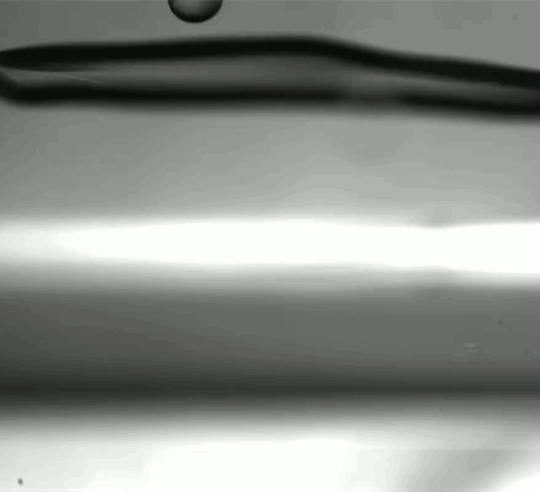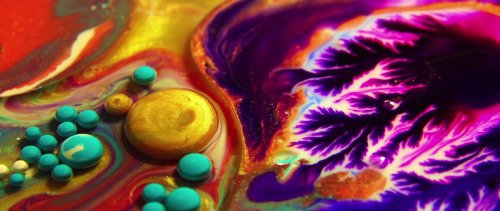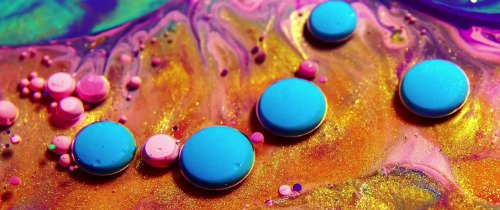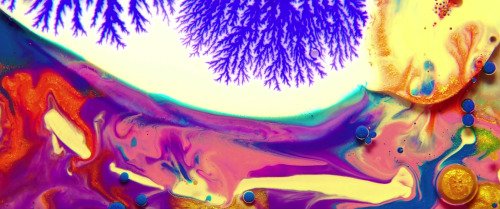Antibubbles are peculiar and ephemeral creations. A bubble typically encloses a gas within a thin layer of fluid. As the name suggests, an antibubble does the opposite: it’s a thin film of gas enclosing a liquid droplet within a larger background liquid. That thin gas film makes antibubbles extremely delicate. Disturb it at all – as the thinning jet at the top of the animation above does – and that film will break apart, much like a soap bubble. To see more antibubble action, check out some of our previous entries, including antibubbles in a vortex and a simple way to create antibubbles. (Image credit: C. Kalelkar and S. Phansalkar, source)
Tag: antibubbles

Slipping Through a Soap Film
A droplet falling at high speed can pass through a soap film without breaking it. On impact, the drop stretches the soap film and ultimately only passes through by getting coated with a thin shell of soap film fluid. That liquid shell is separated from the original droplet by an extremely thin air layer. This air layer isn’t typically visible, but we know that it’s there from what happens when that soap-film-shelled droplet later impacts a liquid pool. As seen above, the droplet sits on the surface until the soap film shell coalesces with the pool. This sucks the drop under, but the drop itself does not coalesce. Instead it becomes an antibubble – a submerged liquid drop surrounded by a shell of air. (Image credit: J. Zou et al., source)

“Kingdom of Colours”
Oil, paint, and soap combine to create a polychrome landscape in Thomas Blanchard’s “Kingdom of Colours” short film. Colorful droplets of paint coated in oil form anti-bubbles that skim along the liquid surface until they burst, dispersing new colors. One of my favorite touches in this video, though, are the branching fingers of color that appear repeatedly (most often in blue-violet). This is an example of a phenomenon known as the Saffman-Taylor instability. It’s a hallmark of a low viscosity fluid pushing into a higher viscosity one–like air into honey. (Image/video credit: T. Blanchard; via Flow Vis)




Antibubble Vortex Rings
Bubbles are familiar, but antibubbles are a bit more unusual. An antibubble typically has a liquid-air-liquid interface, with a thin shell of air separating a liquid droplet from the surrounding fluid. Although they look rather like bubbles, antibubbles behave differently. Antibubbles are, for example, very sensitive to pressure changes. A sinking antibubble like the one in the video above, experiences a higher pressure on its lower face. This pressure compresses the gas shell and thins it on the bottom. The air shell bursts at the thin point and the antibubble collapses, generating two vortex rings and a small, buoyantly rising bubble. (Video credit: S. Dorbolo et al.)
P.S. – Hello, new followers! Where did you all come from?!

Antibubbles
Antibubbles–a liquid droplet surrounded by a thin film of gas and immersed in more liquid–are fragile things. This video explores how antibubbles behave when placed in proximity to a tornado-like whirl. When placed near the eye, where fluid motion is primarily vertical, the antibubble is stretched vertically. When placed in the rotating eyewall, the antibubble is distorted into a ring-like shape before it breaks down. (Video credit: D. Terwagne et al; APS Gallery of Fluid Motion 2009)





